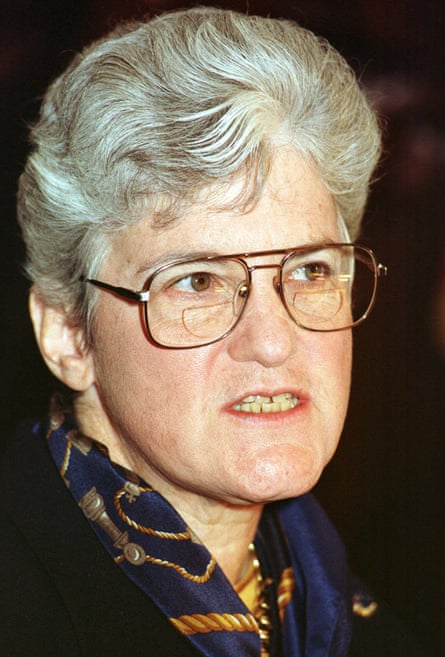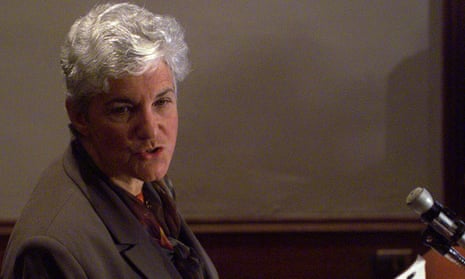One had a poster from the movie Tombstone on his office wall with “Justice is coming” emblazoned on it; another used a miniature model of an electric chair as a paperweight; a third, dubbed the “Queen of death”, said she was “passionate” about judicially killing people and described the emotion of watching an execution as a “non-event”.
What they all had in common was a vast appetite for putting men and women to death. What additionally made them special was that they all had the power to turn such unusual tastes into sentences.
As head prosecutors in their counties, just five individuals have been responsible for putting no fewer than 440 prisoners onto death row. If you compare that number to the 2,943 who are currently awaiting execution in the US, it is equivalent to one out of every seven.
Or express the figure another way: of the 8,038 death sentences handed down since the death penalty was restarted in the modern era 40 years ago this week, some one in 20 of them have been the responsibility of those five district attorneys alone.
The five are profiled in a new report from Harvard Law School’s Fair Punishment Project. Titled America’s Top Five Deadliest Prosecutors, the report highlights the lion-sized role in the modern death penalty of just four men and one woman.
They are: Joe Freeman Britt of Robeson County, North Carolina; Donnie Myers of Lexington, South Carolina; Bob Macy of Oklahoma County; Lynne Abraham of Philadelphia County; and Johnny Holmes of Harris County, Texas.
Just how extraordinary this elite club of lawyers is can be seen in the biography of Bob Macy. Until his death in 2011, he was known as Cowboy Bob because of his traditional frontier dress sense: he always wore cowboy boots, a large cowboy hat, a black string tie, a black suit and a white shirt.
Over the course of 21 years as the top prosecutor in Oklahoma County, Macy put 54 people on death row. That gave him the distinction of sending more people to their potential deaths than any other district attorney in the nation.
And many did actually go to their deaths. According to records compiled by the Fair Punishment Project, 30 of those prisoners were executed.
That might have presented an ethical burden to some, but not to Macy. As he sat beneath his Tombstone poster, he ruminated on the “patriotic duty” of prosecutors to aggressively pursue death sentences. He was proud of having sent a 16-year-old, Sean Sellers, to the death chamber before the US supreme court banned the execution of juveniles in 2005.
The problem is that Macy’s sense of legal propriety was not as honed as his sense of patriotic duty. The Harvard report notes that about a third of the 54 capital sentences he secured were later challenged and misconduct uncovered; three death-row prisoners were exonerated.
A similarly disturbing pattern of misconduct and error is recorded by the other deadliest prosecutors. Britt, who died in April, obtained 38 death sentences in the course of his 14-year career.

He once said that “within the breast of each of us burns a flame that constantly whispers in our ear ‘preserve life at any cost’. It is the prosecutor’s job to extinguish that flame.”
Which is all very well, were it not for the fact that in more than a third of his cases ending in death sentences he was later found to have committed misconduct. Two of his death row inmates were exonerated: Leon Brown and Henry McCollum, two intellectually disabled brothers who were 15 and 19 respectively when they were set up for murder.
Myers is the only one of the five who is still in office, with plans to retire at the end of the year. The lawyer, the one with the electric chair paperweight on his desk, did not respond to the Guardian’s questions about his inclusion in the top five club of deadliest prosecutors.
He achieved 39 death sentences in the course of his 38 years in practice but labored under a 46% rate of misconduct that was later discovered. Six of his death sentences were overturned due to problems in the way he had secured a capital sentence – often involving discriminatory exclusions of jurors based on race.
The report notes that Myers once rolled a baby’s crib draped in black cloth in front of a capital jury and, crying profusely, told them that a failure to return a death sentence would be like declaring “open season on babies in Lexington County”. In another death penalty case, he referred to the black defendant as “King Kong”, a “monster”, “caveman” and “beast of burden”.
The grossly disproportionate impact of these district attorneys in just five of America’s 3,100 counties gives the lie to the US supreme court opinion, issued on 2 July 1976 in Gregg v Georgia, that reopened the death penalty in America. That ruling said that capital punishment could be practiced in such a way that it was neither arbitrary nor capricious.
But the past 40 years have shown it to be highly arbitrary. In a spirited dissent issued last year, Justice Stephen Breyer argued that it was time for the supreme court to consider whether the ultimate punishment should be ruled unconstitutional and banned outright.
Breyer found that “40 years of experience make it increasingly clear that the death penalty is imposed arbitrarily, without the reasonable consistency legally necessary to reconcile its use with the constitution’s commands”. One of the examples he gave of inconsistency was that not only do some states allow the death penalty while others do not, but also “within a death penalty state, the imposition of the death penalty heavily depends on the county in which a defendant is tried”.

The remaining two of the five most deadly prosecutors did not personally secure all their own death sentences but did preside over teams of lawyers who put astonishing numbers of people onto death row. Lynne Abraham, known as the “Queen of death”, saw 108 capital sentences returned during her time as chief prosecutor in Philadelphia County.
Asked whether she had ever doubted the outcome of a capital case, she said categorically that she never had. Yet two of her cases ended in exonerations.
Johnny Holmes was the top prosecutor in Harris County, Texas, which covers Houston. During his 21 years in charge until his retirement in 2000, 201 people were sent to death row.
As the Harvard team points out, as soon as Holmes retired, the number of death sentences secured in Harris County plummeted from an average of 12 a year during his heyday to just one a year now. That suggests that capital punishment in America is what the authors call a “personality-driven system”.
They point out that despite the gradual decline of new death sentences across the country, the syndrome of overzealous prosecutors remains a problem today. The enduring distortion of the numbers, they say, is evidence that the application of the death penalty has always been less about the crime and the criminal, “and more a function of the personality and predilections of local prosecutors entrusted with the power to seek the ultimate punishment”.
